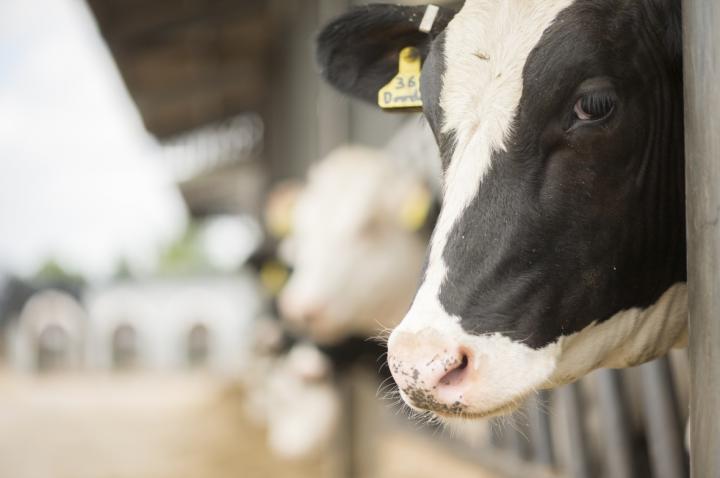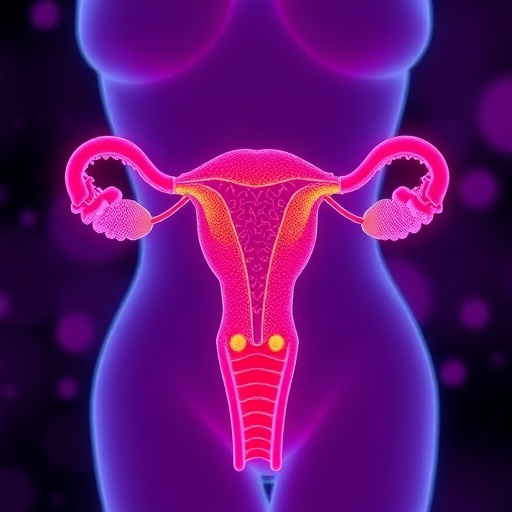
Credit: University of Nottingham
Veterinary researchers at the University of Nottingham have produced a new tool to help UK dairy vets and farmers monitor and reduce use of antibiotics in their dairy herds to help combat antimicrobial resistance (AMR) in the farming industry and beyond.
It follows a new study by the Nottingham Vet School showing that, in a large sample of dairy farms, 25% of farms used 50% of the total antibiotics used across all farms in a year – with antibiotic footbaths accounting for the biggest volume dispersed into the food chain. The study is published in the Veterinary Record.
Pathogenic bacterial resistance to antibiotics is a growing problem worldwide and with no new antibiotics developed for more than 30 years, global health leaders are calling for urgent action to reduce antibiotic use in agriculture as well as human medicine. Administering antibiotics to an animal increases the risk of bacteria acquiring resistance – potentially reducing the effect of treatments in the future. The Nottingham Vet School's Ruminant Population Health Group has designed a new online tool that farmers and vets can use literally 'in the field' to measure and monitor their prescribing and use of antibiotics in dairy cattle. It's called the Nottingham University Dairy Antimicrobial Usage (AMU) Calculator and is available to download for free on the AHDB Dairy website.
Senior Clinical Training Scholar and veterinarian, Robert Hyde, said: "We felt it was crucial to provide the means with which to benchmark antimicrobial usage on farms, so that veterinarians and farmers can begin to monitor, and reduce, their levels of antimicrobial usage in a rational manner.
"Our new study provides the first published research into antimicrobial use in British dairy herds as well as factors associated with high usage. We looked at a sample of 358 dairy farms, over a 12-month period, with the total number of cattle being around 81,000 (7% of dairy cows in England). The survey found that most of the antibiotic use was via injections, which accounted for around 78% of the total antibiotics used or sold to the farms."
"What stood out as particularly surprising was the effects of the use of antibiotics in footbaths for conditions like digital dermatitis. Footbaths for cattle can use phenomenal quantities of antimicrobials, and represent an obvious target for the rapid reduction of antimicrobial usage."
Specialist cattle vet and Clinical Assistant Professor John Remnant from Nottingham Vet School said: "We need to be reducing the use of antibiotics on farms to the lowest level we can, but without failing to treat sick animals and reducing welfare standards. This means preventing disease – an area our research group has worked on for many years. Antibiotic use on UK dairy farms has been falling in recent years, as farmers and vets make efforts to turn towards prevention instead of treatment.
"The government has recently published figures showing the sale of antibiotics for food-producing animals has fallen from 62mg per kg of animal to 45mg per kg in the past two years but this is sales, not usage as we know some of the antibiotic products bought won't be used. This is why our new study combined with the new online AMU tool is so important in helping farmers and vets instigate a more efficient protocol for the treatment of dairy cattle."
Edward Bailey from the George Veterinary Group in Wiltshire is already using the AMU calculator. He said: "This new tool is proving really useful to compare antimicrobial use between farms. It has helped cut through the confusion of different systems of measurement. It has been easier to effect change being able to display graphically to farmers their critically important antimicrobial usage and how particular patterns of use (e.g. footbath) can hugely affect how they compare with others."
This work is part of a series of practical, peer-reviewed research and accompanying tools provided by the Ruminant Population Health Group to help veterinary practitioners and farmers understand where they can really make a difference to antibiotic use on farms. This is the first peer-reviewed paper evaluating AMU in dairy herds. Other work includes the first peer-reviewed paper quantifying AMU in sheep flocks (Davies et al., 2017).
Around 50 veterinary practices have already begun using the AMU calculator but the researchers say that antimicrobial benchmarking needs to happen a national level for the system to have maximum impact on antibiotic use in the cattle sector.
###
Media Contact
Emma Rayner
[email protected]
44-011-595-15793
@UoNPressOffice
http://www.nottingham.ac.uk
Original Source
https://www.nottingham.ac.uk/news/pressreleases/2017/december/novel-tool-for-vets-and-farmers-to-monitor-and-reduce-antibiotics-on-dairy-farms.aspx





